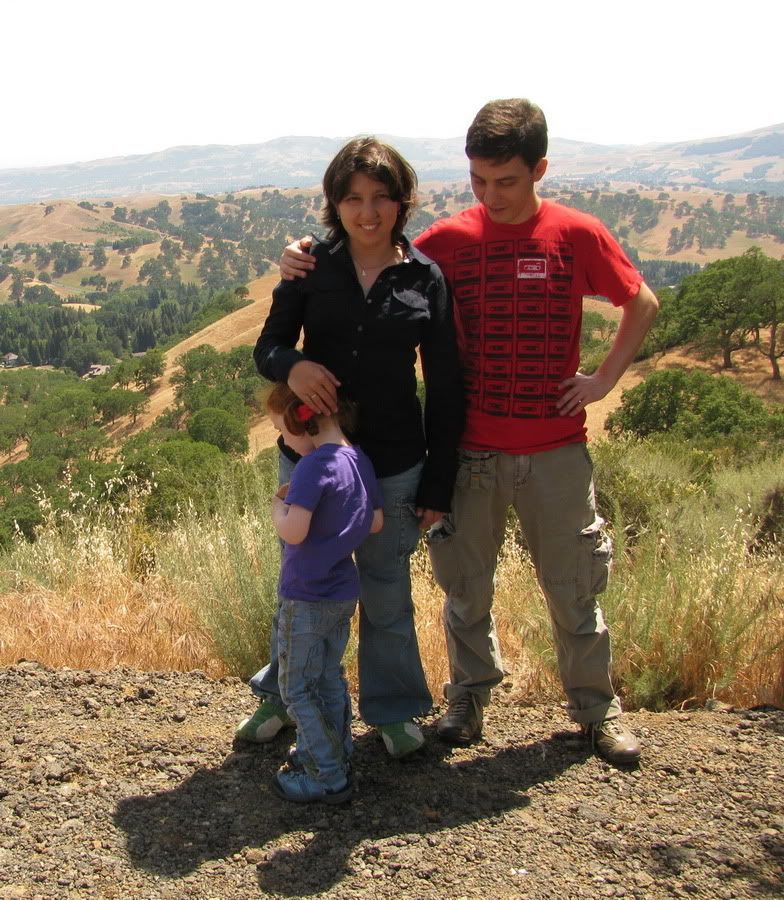[Most Recent Entries] [Calendar View] [Friends View]
Friday, June 5th, 2009
| Time | Event |
| 12:01a | Mount Diablo У меня везуха, у меня на районе живут аж 3 одноклассника!!! Юлька, Ашот и Карина - я так рада, что они есть тут:))) в субботу (ту еще) ездили с двумя гулять. Ашот нас, новичков вывозил в горы. Ехать долго, но оно того стоит!  (По с дороги уставшая, но она молодец! дорогу осилила, идущая она в бОльшей степени, чем едущая) ( фотографии и немного информации ) всем спасибо;) откланиваюсь на сегодня/завтра:))) |
| 10:08p | Анекдот от Полины Рисовал Вова петуха, не докрасил, спать лег. Мышка приходит, карандаш берет и говорит: - Это ты не закрасил петуха? А карандаш говорит: - Это не я, это Вова (ха-ха-ха) мне кажецо, что тут есть некоторые параллели с рассказом Сутеева про карандаш и мышку;))) но мы его дааавно не читали, но видимо память - штука крепкая;)) |
| 11:24p | Speed limits Speed limits For example, if you are driving 45 mph in a 55 mph speed zone during a dense fog, you could be cited for driving “too fast for conditions.” Regardless of the posted speed limit, your speed should depend on: • The number and speed of other vehicles on the road. • Whether the road surface is smooth, rough, graveled, wet, dry, wide, or narrow. • Bicyclists or pedestrians walking on the road’s edge. • Whether it is raining, foggy, snowing, windy, or dusty. The maximum speed limit on most California highways is 65 mph. You may drive 70 mph where posted. Unless otherwise posted, the maximum speed limit is 55 mph on two-lane undivided highways and for vehicles towing trailers. Within 500 feet of a school while children are outside or crossing the street, the speed limit is 25 mph, unless otherwise posted. All vehicles must stop Near schools, look for: • Bicyclists and pedestrians. • School safety patrols or school crossing guards and obey their directions. For the crossing guard’s safety, allow him or her to safely get to the side of the road before driving ahead. • Stopped school buses and children crossing the street. Some school buses flash yellow lights when preparing to stop and let children off the bus. The yellow flashing lights warn you to slow down and prepare to stop. When the bus flashes red lights (located at the top front and back of the bus), you must stop from either direction until the children are safely across the street and the lights stop flashing. The law requires you to remain stopped as long as the red lights are flashing (CVC §22454). If you fail to stop, you may be fined up to $1,000 and your driving privilege could be suspended for one year. If the school bus is on the other side of a divided or multilane (two or more lanes in each direction) highway, you do not need to stop. Blind Intersections The speed limit for a blind intersection is 15 mph. An intersection is considered “blind” if there are no stop signs at any corner and you cannot see for 100 feet in either direction during the last 100 feet before crossing. Trees, bushes, buildings, or parked cars at intersections can block your view to the side. If your view is blocked, edge forward slowly until you can see. The speed limit in any alley is 15 mph. Business or Residence Districts the speed limit is 25 mph , unless otherwise posted. Near Railroad Tracks The speed limit is 15 mph within 100 feet of a railroad crossing where you cannot see the tracks for 400 feet in both directions. You may drive faster than 15 mph if the crossing is controlled by gates, a warning signal, or a flagman. • Look in both directions and listen for trains. Many crossings have multiple tracks, so be ready to stop before crossing, if necessary. Cross railroad tracks only at designated crossings and only when it is safe to do so. • Expect a train on any track at any time traveling in either direction. If you need to stop after crossing the tracks, make sure your vehicle clears the tracks before you stop. • Never stop on the railroad tracks. Remember that a train cannot stop quickly or swerve out of the way. If you are on the tracks, you risk injury or death. • Watch for vehicles that must stop before crossing train tracks. These vehicles include buses, school buses, and trucks transporting hazardous loads. • Remember that flashing red lights mean STOP! Stop at least 15 feet but not more than 50 feet from the nearest track when the crossing devices are active or a person warns you a train is coming. Stop if you see a train coming or you hear the whistle, horn, or bell of an approaching train. • Do not go under lowering gates or around lowered gates. Flashing red lights indicate you must stop and wait. Do not proceed over the crossing until the red lights stop flashing, even if the gate rises. If the gates are lowered and you do not see a train approaching, call the posted railroad emergency toll free number or 911. Be ready to give a detailed description of your location. Light Rail Vehicle Crossings The same rules apply to light rail vehicle crossings as to freight train crossings. Do not proceed across the tracks until you can see clearly in both directions and are sure there are no light rail vehicles or trains coming. Do not go around or under any lowered gate. |
| << Previous Day |
2009/06/05 [Calendar] |
Next Day >> |